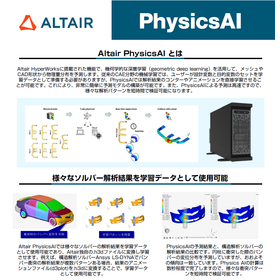Analysis was also conducted in the absence of a metal post! The analysis results at a frequency of 10.13 [GHz] are shown.
We will introduce a case study where metal posts were arranged to suppress the reflection of electromagnetic waves at 10GHz, and the frequency dependence of the reflection coefficient was analyzed. Impedance boundary conditions were set at the exit. The walls of the waveguide and the metal posts were treated as perfect conductors, and the input was provided as the TE10 electric field [V/m]. Additionally, an analysis was conducted for the case without metal posts for comparison. 【Case Overview】 ■ Software Used: PHOTO-WAVEjω ■ Analysis Conditions ・Waveguide: WRJ-10 (22.9mm × 10.2mm) ・The walls of the waveguide and the metal posts are perfect conductors ・The input was provided as the TE10 electric field [V/m] ・Impedance boundary conditions were set at the exit *For more details, please refer to the related links or feel free to contact us.
Inquire About This Product
basic information
For more details, please refer to the related links or feel free to contact us.
Price range
Delivery Time
Applications/Examples of results
For more details, please refer to the related links or feel free to contact us.
Company information
At Photon, we are developing "electromagnetic field analysis software" that models and simulates products and components utilizing electromagnetic phenomena on a computer. In traditional design and development environments, the process has primarily revolved around trial and error through prototyping based on the experience of engineers and experiments with prototypes. However, conducting experiments using actual prototypes and analyzing the results requires significant time and cost. Moving forward, transitioning from an experimental and prototyping-based approach to an analysis-based design approach will be a crucial challenge for improving productivity, and establishing simulation technology as the core of analysis-based design techniques will be essential. In this context, Photon is developing and providing "analysis software" focusing on electromagnetic fields, as well as heat, vibration, and sound fields. By utilizing Photon's software, efficient development and design of various industrial products can be achieved. In this way, Photon aims to support users in reducing the number of prototypes, lowering development costs, and shortening development periods in their manufacturing environments, ultimately enhancing their competitiveness.





![[Case Study] Photonic Crystal Optical Waveguide (Electromagnetic Field Analysis)](https://image.mono.ipros.com/public/product/image/abe/2000763749/IPROS26662464443057788112.png?w=280&h=280)

![[Analysis Case] Input Impedance Analysis of a Dipole Antenna](https://image.mono.ipros.com/public/product/image/6cf/2000763652/IPROS40087588114269343573.png?w=280&h=280)



![SOLIDWORKS 2026 New Features Seminar [Free Participation]](https://image.mono.ipros.com/public/default/object/noimage_l.gif?w=280&h=280)